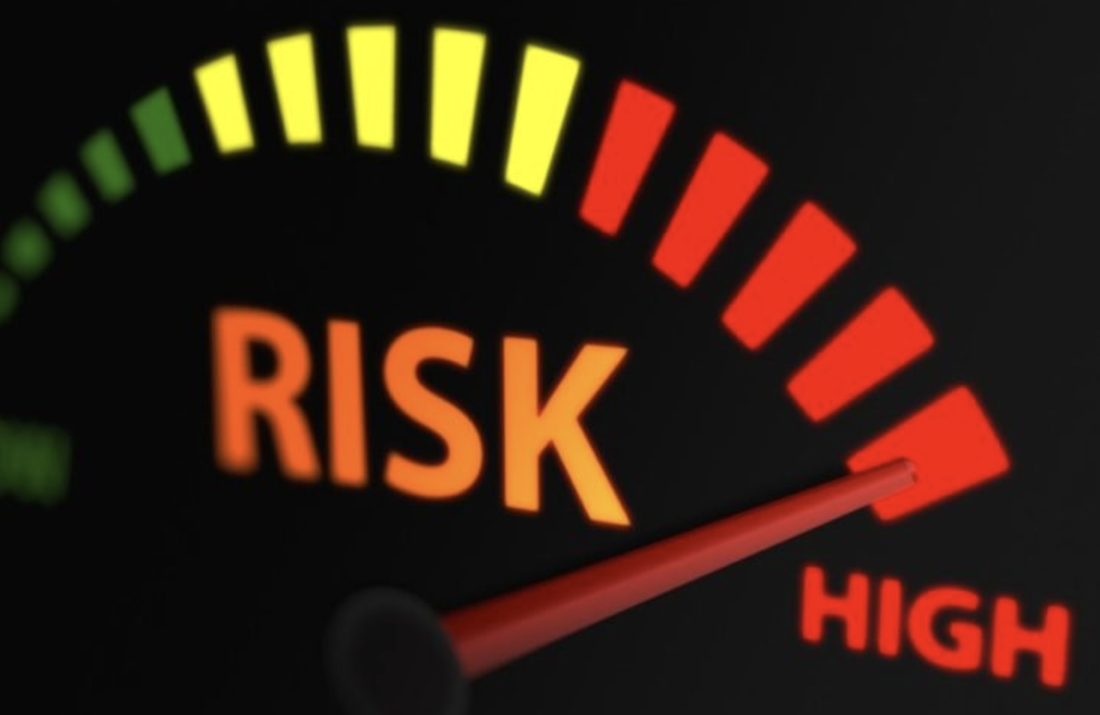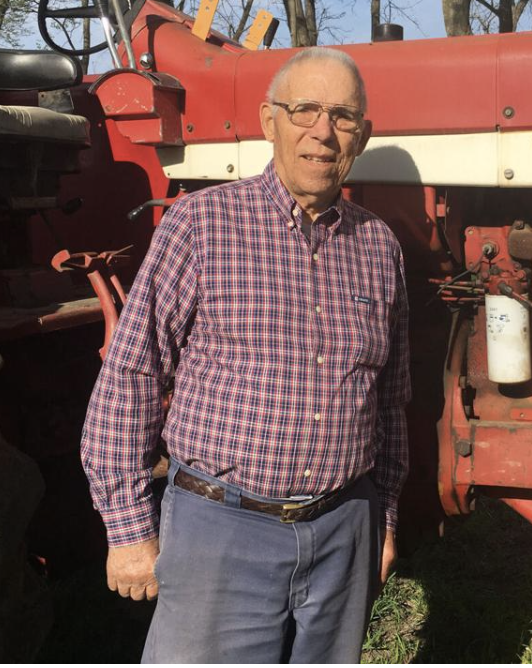I gotta wonder, do these investors actually drop cash into investment schemes they know nothing about, advised by a couple of yahoos who know nothing about how electric transmission is actually paid for? Aaron Bloom and Richard Wiggins should be laughed right outta the room for suggesting that non-utility corporations can invest in electric transmission and earn a GUARANTEED 9-11% return on their investment from ratepayers.
NO!
Their understanding of the financial side of transmission is probably being laughed at in utility and regulatory circles. I hope they're suitably embarrassed for this faux pas. It's sort of like someone who has never had a child telling someone who has many children how to be a parent. Aaron and Richard have no idea what they're talking about!! Their article rings nearly every single bell in this dire warning about fraudulent investment schemes! Maybe Aaron should spend less time trying to act like P.T. Barnum's long-lost grandson and more time being a humble student at NextEra's transmission rates department? Then he could actually know his subject matter before he opens his mouth on the investment sideshow circuit. Obviously Aaron is not the smartest guy in the room, no matter how much he may think so.
I'm going to split this into two parts, the rates/investment lies part, and the energy lies part. Let's do the rates thing first, because it just bugs me so much! Aaron (maybe with the help of Richard?) has completely scrambled two very different ways to pay for new electric transmission into one too good to be true investment "opportunity."
Updating the grid is going to be expensive: at least $150 billion of investment and probably closer to $200 billion. That’s a lot of coin, but here’s the good news: These investments will earn 9 to 11 percent because that’s the regulated return on transmission assets. This is what’s allowed under the regulatory compact that was first laid out in the Binghamton Bridge Supreme Court case of 1865 because transmission is a natural monopoly. This isn’t like the deregulated power generation market; there’s actual competition there so independent power producers like Calpine Corp. can — and do — go bankrupt. Investors can lose everything. Not here — these returns are guaranteed.
The formula is pretty simple. I won’t bother to explain it:
Total revenue requirement = rate base × allowed rate of return + expenses
Biden just unlocked private investment in the grid. It is the most fundamental infrastructure there is — a giant power cord that connects supply with demand. These are valuable assets so the private sector should be lining up to invest. David Swensen made his reputation by championing investment in novel asset classes, and this one is sitting right in front of us: X marks the spot. Pensions and large companies like Apple, Alphabet, Microsoft, and Amazon are sitting on mountains of cash that should be jonesing for private finance initiative projects to build transmission for the federal government, give operational control to a regional transmission organization, and receive the approved return from ratepayers. Do more than consume the power — bank the returns!
Only regulated utilities can build and own regulated electric transmission (referred to as the "traditional" kind in my recent blog). Amazon could not decide to build a transmission project and receive a return from electric ratepayers. That's not how the regulatory compact works. (Aaron needs to drop into NextEra's legal department, too, on his way back to the huckster department.) Regulated utilities do not need "investments" from Amazon to build transmission ordered by grid planners (not the federal government). Regulated utilities invest THEIR OWN money in transmission projects... and that's why they are allowed a regulated 9-11% return. The regulatory compact balances low rates for ratepayers with a return that is just enough to keep the utility financially healthy. There's nothing in there about corporations who are not regulated utilities. Ratepayers are not money fountains for private corporations. Utilities are for the purpose of serving the public. Amazon is not. Furthermore, utilities would never allow a company like Amazon to invest in their projects and collect the entire return. The utility wants (needs?) that return to keep its own company healthy. There's nothing in it for a utility to pass on all its profits to Amazon. Let's really stretch Aaron's brain here, shall we? A utility's equity in a transmission project is usually in the neighborhood of 40-60%. It only earns a return on its equity. The remainder of the project is financed with debt. And that's not debt from Amazon. It might be a bank, who gives really good rates to utilities - maybe 6% or less, based on the utility's credit rating and guaranteed regulated revenue stream. However, debt is paid back to the bank by ratepayers at the utility's borrowing rate, not its equity rate (6%, not 9-11%). There is no regulated profit for the utility there. In addition, the "turning over operational control" of new transmission to regional transmission organization is purely figurative. RTOs don't own transmission. It's not like a utility could build transmission and then give it to PJM and wash its hands of the responsibility while collecting its juicy ratepayer return. Saying something like that just demonstrates a complete lack of knowledge about transmission... or pushing a conniving and fraudulent investment scheme.
The only investment space for companies like Amazon in the electric transmission world is merchant transmission. Non-utilities can propose, build and own whatever they want in the non-regulated world of merchant transmission. Go for it, Jeff Bezos! However, merchant transmission is not regulated. This means there is no revenue stream from captive ratepayers. This means there are no guaranteed returns. This is a deregulated transmission project market. There’s actual competition there so merchant transmission developers like Clean Line Energy Partners, can — and do — go bankrupt and their investors can (and did!) lose everything. Merchant transmission can only recover its costs through negotiated rates in a free market. Merchant transmission must have voluntary customers to be financially viable. There are no captive ratepayers. The allowed return is the difference between the cost of service and the rate that can be voluntarily negotiated. It is not guaranteed. Nothing about merchant transmission is guaranteed by anyone. It's a risky business, but if Amazon wants to dabble in it nobody is going to stop them. But Amazon has to accept the full risk of losing its investment in its entirety. Is that a good investment for pensions and corporations? No, it's not.
Biden did not "unlock investment in the grid." The only thing that is actually operational is some transmission loan guarantees from DOE. That does not mean that Amazon can invest in the new merchant transmission Clean Line, called Grid United, and recover all its investment from the federal government when Grid United fails. Merchant transmission assumes all risk. If the federal government is taking on the risk, then it's no longer a merchant project and we're back to square one with the regulated utilities that aren't interested in Amazon's money.
Bottom line: There is no "private investment" in regulated transmission. There is no opportunity for companies like Amazon here. Trying to sell it as a high yield, no risk investment opportunity would make P.T. Barnum blush.
Now, let's move on to the energy lies...
- Environmentalists are not winning. They're losing. Probably because of lies like this.
- We don't need ONE unified electric grid. The bigger it gets, the more connections it makes, the bigger its chances of failure. Cascading outages are a real risk when everything is connected.
- California and Texas can't keep their lights on in a crisis because they don't have enough reliable baseload generation that can run when called. Renewables are variable resources that must be backed up with adequate baseload. Build too many subsidized renewables and baseload is forced out of market and closes. When your baseload closes, it is not incumbent upon other states or regions to sell you their electricity because you didn't plan your system properly. If California and Texas planned and built for their own needs, instead of planning to be a power parasite, they would be able to keep their lights on.
- Remote renewables are NOT "distributed" generation. They are the same centralized generation + transmission model criticized in the article.
- Fifteen states DO NOT account for 87 percent of U.S. wind energy potential, most geographically far from the urban load centers where most of the country’s energy is consumed. The article leaves out offshore wind, which has much more potential and is conveniently located nearly all of the major urban electric load. Turning the Midwest into "the Saudi Arabia of wind" while keeping your own sea views pristine is just another parasitic move.
- If Wyoming wants to tax wind power, bravo! There's nothing bad about that. It's good for Wyoming. Why should Wyoming become the parasites' power plant for free?
- The physics of distributed generation do work!
- Wires are not cheaper than batteries in all instances. Consideration must also be given to who pays.
- It's only "cheaper" to build renewables because they are so heavily subsidized by taxpayers. The real problem is that transmission is not an asset that can or should be subsidized.
- The U.S. transmission grid is not inadequate. It is not congested and old. It is a carefully balanced high-tech machine that is constantly updated and it keeps the lights on, even when the wind doesn't blow. (Had to add that... hope it hit the spot!)
- You can't pump any more electrons on to certain places in the grid because they don't need power there! Building generation in remote places where no one needs it and then demanding that those folks pay to build you a road to get your product to market defeats any cost savings from building the generator there in the first place. How about concentrating on building generation near load and saving us all a lot of money and headaches?
- We don't need to double or triple the size of the electric grid. We simply can't afford it. Electric bills are high enough for most people, without doubling or tripling them. (Investment opportunity!!! Who is supposed to be paying for this? There ain't no such thing as a free lunch!)
- The grid is not collapsing. People may find it boring, but that's because it's serving its purpose and nobody has to think much about it. However, if you triple electric bills, make the grid unreliable, and put huge lattice transmission towers across working farmland and in everyone's backyard I guarantee you that nobody would find it boring anymore. They'd be talking about it constantly... and they'd be coming for your head with torches and pitchforks.
- The sun shines brightest and the wind blows hardest? WTF? Do you know how juvenile this crap sounds? How condescending of you! You glib little shit.
- The overhead grid on huge towers is an old idea that requires sacrifice from landowners who receive no benefit. We don't have to build transmission this way anymore. It can be buried on existing rights of way, like railroads or roadways, and no one would have to sacrifice. In fact, transmission like that would probably face little to no opposition and sail through regulatory proceedings. Why aren't we building that? Why are we stuck in the past continuing to build new versions of Nikola Tesla's grid?
- Nobody cares how many jobs you create building stuff we don't need. Maybe we should just pay these people to sit on the couch and call it a "job." Oh wait... that's already happened.
- If you want low cost energy to increase America's productivity, building a whole new energy source and grid while continuing to pay off the perfectly adequate one we have now, isn't the way to accomplish it. Switching to renewables is only going to drive prices up. I don't believe any "low cost renewables" hogwash. It does not pencil out.
- The only ones who can afford electric cars are the wealthy. The other 99% are going to cling to their gas cars as long as they can, and then simply do without. Every American is not going to switch to an electric car.
- A Tesla charged in WV is not a coal-powered car any more than one charged in New York City. The entire grid is a mix of both "dirty" and "clean" electrons, however there are much more "dirty" ones than "clean" ones. They get all mixed up. You can't segregate them.
- Electrifying everything is putting all our eggs into one energy's basket. That's terrifying. When the electricity goes out at my all electric house, nothing works. Not even the water. That's why I have a diesel generator for back up.... and a charcoal-powered grill! Diversity is a wonderful thing!
- We don't have room for forests of wind turbines and oceans of solar panels. Build that crap in your own backyard.
- The idea that a 3-hour time difference from coast to coast will act as a buffer for renewables failure to produce when needed is preposterous. It's only 3 hours.
- Other countries use more renewables. They also pay exorbitant electric bills and, as a result, use much less electricity. They are not adding things to their electric load, like cars and heat pumps. Other countries have robust offshore wind generation. We have one. Other countries use buried transmission. We do not.
- ZzzzzzZZZssss... oh pardon me, I think I fell asleep reading all this drivel.
Aaron Bloom got run over by a Volvo;
Coming home from transmission rates class last night;
Some folks say there's no such real investment;
But as for these two hucksters, they believe.



 RSS Feed
RSS Feed